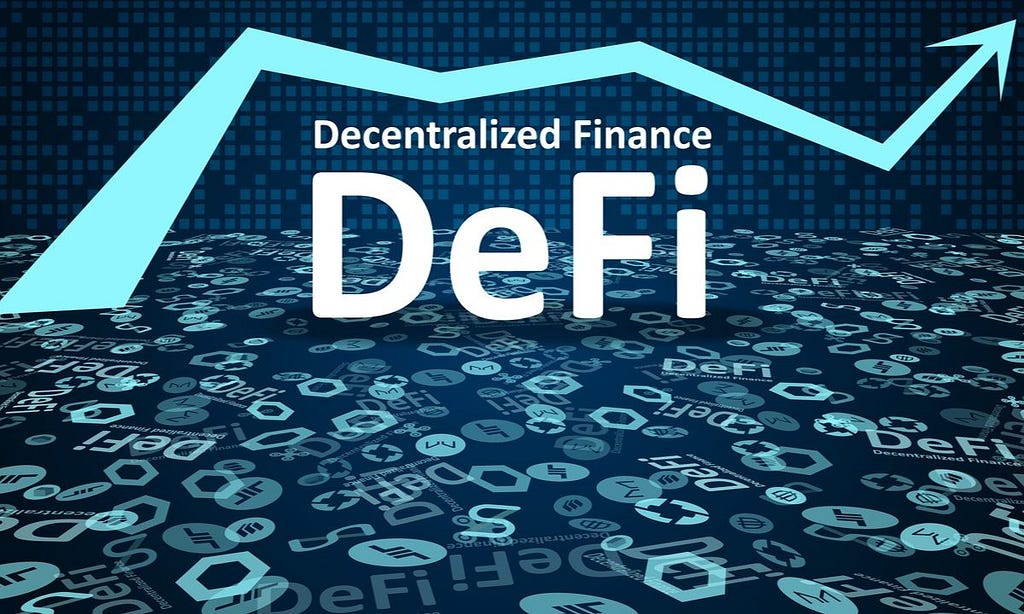
Decentralized Finance (DeFi) is rapidly emerging as a significant force poised to disrupt traditional banking systems by 2025. With its foundation in blockchain technology, DeFi offers a range of financial services that operate without centralized intermediaries, enabling peer-to-peer transactions and fostering a more inclusive financial ecosystem. This blog explores the potential of DeFi to reshape the financial landscape, the challenges it faces, and why businesses should consider engaging with DeFi development company.
Understanding Decentralized Finance
At its core, DeFi refers to an ecosystem of financial applications built on blockchain technology. Unlike traditional finance, which relies on banks and other intermediaries, DeFi operates through smart contracts — self-executing contracts with the terms of the agreement directly written into code. This decentralized approach not only enhances accessibility but also promotes financial inclusion, allowing individuals worldwide to access digital finance services without geographic or socioeconomic barriers.
Key Features of DeFi
Permissionless Access: Anyone with an internet connection can participate in DeFi without needing approval from a central authority. This democratizes finance by allowing individuals from diverse backgrounds to engage in financial activities.
Transparency: Transactions are recorded on public ledgers, making them verifiable and reducing the risk of fraud. Users can track their transactions in real-time, fostering trust within the ecosystem.
Variety of Services: DeFi platforms offer services such as lending, borrowing, trading, and asset management, all within a decentralized framework. This diversity allows users to choose from various financial products tailored to their needs.
24/7 Availability: Unlike traditional banks that operate within specific hours, DeFi services are available around the clock. This constant accessibility is particularly beneficial for global users in different time zones.
How DeFi Disrupts Traditional Banking
DeFi’s disruptive potential lies in several key areas:
1. Elimination of Intermediaries
Traditional banks serve as intermediaries in financial transactions, which can lead to delays and additional costs. DeFi eliminates these intermediaries, allowing users to transact directly with one another. This not only speeds up transactions but also reduces fees associated with traditional banking services. For example, users can lend or borrow funds without going through a bank’s credit checks or approval processes.
2. Financial Inclusion
DeFi platforms can reach unbanked populations who lack access to traditional banking services. According to estimates, billions of people worldwide remain unbanked or underbanked. By providing permissionless access to financial tools, DeFi can empower individuals in developing regions to engage in economic activities previously unavailable to them. This inclusion can foster entrepreneurship and economic growth in underserved communities.
3. Innovative Financial Products
DeFi has introduced novel financial products like yield farming and synthetic assets:
Yield Farming: This allows users to earn returns on their cryptocurrency holdings by lending or staking their assets. Users can often achieve higher returns than traditional savings accounts offer, making it an attractive option for those looking to grow their wealth.
Synthetic Assets: These provide exposure to real-world assets without the need for physical ownership. For instance, users can trade synthetic versions of stocks or commodities on decentralized exchanges.
4. Market Efficiency
The decentralized nature of DeFi can lead to increased market efficiency. Transactions are processed quickly and transparently, reducing the time and costs associated with traditional banking processes. Additionally, automated market makers (AMMs) facilitate trading without relying on order books, further enhancing liquidity and price discovery.
Challenges Facing DeFi
Despite its advantages, DeFi faces several challenges that could impact its growth:
1. Regulatory Uncertainty
The regulatory landscape for DeFi is still evolving. Traditional banks operate under strict regulations designed to protect consumers and maintain market integrity. In contrast, many DeFi platforms exist in a gray area concerning compliance and oversight. This uncertainty may hinder broader adoption among institutional players who require regulatory clarity before engaging with new technologies.
2. Security Risks
While blockchain technology is generally secure, vulnerabilities exist within smart contracts that can be exploited by malicious actors. High-profile hacks have raised concerns about the security of funds held in decentralized protocols. Users must be proactive in managing their investments and understanding the risks involved when participating in DeFi platforms.
3. Technical Complexity
The technical intricacies of using DeFi platforms may deter less tech-savvy individuals from participating. User interfaces can be complex, making it essential for companies to focus on user experience when developing DeFi applications. Simplifying onboarding processes and providing educational resources can help bridge this gap.
The Future of DeFi and Traditional Banking
As we look towards 2025, several trends indicate that the relationship between DeFi and traditional banking will continue to evolve:
1. Collaboration Over Competition
Many traditional banks are exploring ways to integrate aspects of DeFi into their existing offerings through partnerships or by developing in-house solutions inspired by decentralized finance principles. For instance, some banks are experimenting with blockchain technology for cross-border payments or creating digital wallets that incorporate both fiat and cryptocurrencies.
2. Increased Investment in Blockchain Technology
As blockchain technology matures, more financial institutions will likely invest in developing their capabilities around this technology to remain competitive. This investment could lead to more innovative products and services that blend traditional finance with decentralized solutions.
3. Regulatory Developments
As regulators begin to establish clearer guidelines for DeFi operations, traditional banks may find it easier to navigate this new landscape while still adhering to compliance requirements. A more structured regulatory framework could encourage greater participation from institutional investors who have been hesitant due to uncertainty.
Conclusion
Decentralized Finance represents a formidable shift in how financial services are delivered and accessed globally. While challenges remain — particularly regarding regulation and security — the potential benefits of increased accessibility, efficiency, and innovation make it an attractive alternative for consumers and businesses alike.
For businesses looking to explore the opportunities presented by DeFi or seeking development solutions tailored for this emerging field, partnering with experienced DeFi development companies like Codezeros could be a strategic move toward future-proofing your financial operations.
Engage with Codezeros today to discover how you can harness the power of decentralized finance for your business needs!
In conclusion, as we approach 2025, it is clear that Decentralized Finance is not just a trend but a fundamental shift that could redefine how we think about money and banking. Companies looking for innovative ways to adapt should consider exploring partnerships with specialized firms like Codezeros that understand both the technical aspects and market dynamics of this burgeoning field.
Whether you’re interested in building a new platform or integrating existing systems with DeFi capabilities, now is the time to act! Reach out today for a consultation on how your business can benefit from the growing world of decentralized finance.
Why DeFi is Poised to Disrupt Traditional Banking in 2025 was originally published in Coinmonks on Medium, where people are continuing the conversation by highlighting and responding to this story.








